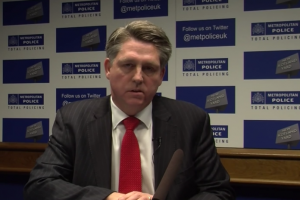RBI cuts repo rate and CRR to revive India’s decelerating growth
The RBI reduced the repo rate from 8% to 7.75%. Repo rate is the discount rate at which a central bank buys government securities from commercial banks.
As a result of the changes to repo rate, the reverse repo rate gets revised to 6.75% and the Bank Rate stands adjusted to 8.75%.
The RBI also reduced the cash reserve ratio (CRR) of scheduled banks from 4.25% to 4% effective from February 9, 2013. The CRR is the amount of funds that the banks have to keep with RBI. It is designed to drain out excessive money from the banks.
RBI governor, D Subbarao announced the changes to key interest rates at the third quarter review of monetary policy for 2012-13.
“Growth has decelerated significantly below trend through the last fiscal year and through this year so far, and overall economic activity remains subdued,” he said, explaining the considerations behind the policy move.
More like this
- India slashes growth forecast yet again, this time to 5%
- CII concerned about the downward trend in Indian GDP growth rate
- India Inc. pessimistic about the economy, expect lacklustre GDP growth
“While the series of policy measures announced by the government [including FDI reforms in retail and aviation] has boosted market sentiment, the investment outlook is still lacklustre, especially in terms of demand for new projects,” he added.
According to the RBI, investment activity on the demand side has been “way below desired levels” and consumption demand too has started to decelerate. External demand has also weakened due to languid global growth.
The government’s decision to further ease the monetary policy stance was also propelled by high inflation rates and tightening liquidity conditions.
The central bank has been under pressure to take series of growth-boosting measures as India’s growth fell to a three-year low.
The latest cuts in repo and CRR rates come for the first time in nine months as GDP growth slowed significantly, dropping to 5.5% in the first quarter of 2012-13, and dropping even further to 5.3% in the second quarter.
The decline in the GDP growth rate became more broad-based, with consumption demand also slowing alongside stalling investment and declining exports, Subbarao said.
The latest policy action could bring positive economic outcomes such as boosting growth and investment; stabilising the inflation; and improving the liquidity conditions to support the credit flow, the RBI hoped.
Most read
- 2015: Full list of Indian States, capitals and their Chief Ministers
- Indian cabinet 2014: Full list of Ministers and their portfolios in the Modi government
- South Indian actress Trisha Krishnan’s father passes away
- Recipe: Misal Pav – how to make missal masala, usal and tarri
- Bollywood hearthrob Shah Rukh Khan is in London attending Asian Awards
- Review: Southall Travel (Also Travel Trolley and Fly Sharp)
- Pics: Amitabh and Aishwarya Rai Bachchan dazzle in Chennai for Kalyan Jewellers
- Mahatma Gandhi statue erected in London’s Parliament Square
- Pics: Trisha Krishnan rocks Tarun Tahiliani saree for Lion film’s audio launch in Hyderabad
- Pics: Bipasha Basu exudes glamour at IIFA 2015 awards press conference in KL
India News Bulletin by email
Desi Events
Featured Stories
More Lead Stories
- Review: Southall Travel (Also Travel Trolley and Fly Sharp)
- Pics: Amitabh and Aishwarya Rai Bachchan dazzle in Chennai for Kalyan Jewellers
- Amitabh Bachchan honoured with Padma Vibhushan
- Long stay Indian visitors, students, professionals to pay for NHS access
- Mahatma Gandhi statue erected in London’s Parliament Square






















